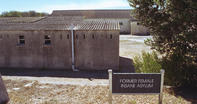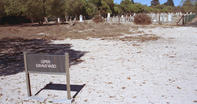From Prison to Infirmary

Robben Island was an ideal place to send the more undesirable citizens of South Africa who struggled to fit into society physically, mentally and socially. Sticking these unfortunate souls on the island, far away from the eyes and conscience of the populace, seemed to be an ideal solution and, from 1846 to 1931, Robben Island was predominantly used as an isolation tank for the socially undesirable. In the Mid-1800’s, leprosy broke out.
The lepers were a particularly unfortunate group. Firstly, they were victims of a horrible disease (which then had no known cure) and, secondly, they were victims of an ignorant and unforgiving society which shunned them as unclean and hazardous. Even today, the common-knowledge of leprosy suggests a fatal and highly contagious disease that makes your fingers fall off and your skin rot. The reality, however, is far less fearsome.
On Robben Island, the custodians of the General Infirmary cared for the lepers as best they could. In addition to giving them powerful and unnecessary laxatives, it was thought that sea water was beneficial for those living with the disease, and a tidal pool was constructed at the far-end of the island where they could bathe.
The remains of this pool, called the Baths of Bethesda, are still visible today and the stagnant, black water that lies within the crumbling stone retaining-wall is an evocative echo of an unhappy community. The lepers of the Cape were thus torn away from any family and friends that they might have had, and dumped on the island.
Living Conditions on the Island

Living conditions on the island were dire. The water supply was brackish, the climate was unforgiving, the loneliness was overwhelming and diseases such as dysentery were prevalent. In the 1850s, however, a number of scandals broke regarding the conditions on the island and the authorities were forced to dismiss the Superintendent.
In the 1860s, a new superintendent tried to reform the treatment of lunatics, replacing chains and beatings with occupational therapy and humane supervision. Facilities were still woefully inadequate, however, and the status of the inmates did not really justify the cost of building new structures. The first major renovations of the General Infirmary were only undertaken in the 1890s.
In 1931, the League of Nations Health Organisation stated that compulsory segregation of lepers was no longer necessary and should be replaced with a more lenient ‘isolation’ policy that made allowance for infectious and non-infectious cases of the disease. The leper asylum on Robben Island was closed that same year. The remaining patients were sent to Westfort Hospital, near Pretoria.
By David Fleminger